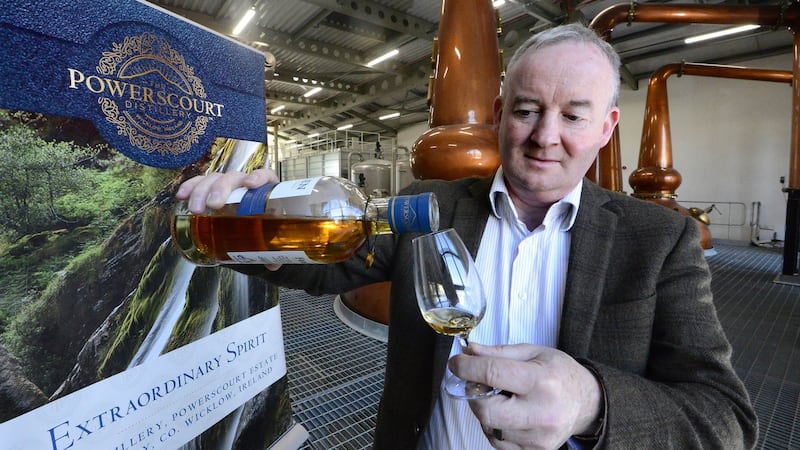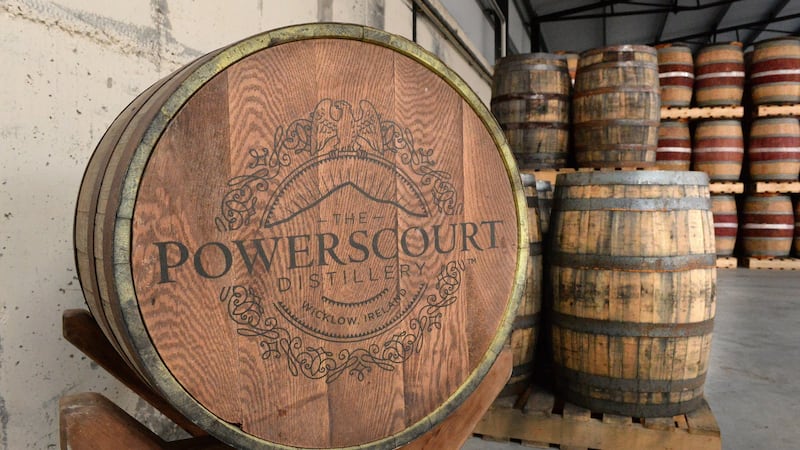Barely a month goes by without yet another whiskey distillery opening here. On November 27th, Blackwater Distillery in Lismore, Co Waterford, became the 21st operational Irish whiskey distillery on the island. There are another 25 in the pipeline, with five slated to open in the coming months.
While this highlights a remarkable recovery for an industry that was once in the doldrums, there are questions about the long-term viability of the sector. Can a country as small as Ireland really be home to so many distilleries and visitor centres? Is consolidation inevitable?
The €20 million-plus Powerscourt Distillery in picturesque Enniskerry, Co Wicklow, is one of the newcomers to the sector. It will open its visitors' centre in early 2019, and is located on the grounds of the sprawling and magnificent Powerscourt estate.
The investment includes €5 million from the Goodbody EIIS Fund to help support the opening of the visitor centre, launch the distillery’s first few whiskies under the Fercullen brand, and lay down initial stock.
"This is an industry that goes through boom and bust [cycles], and one of the big challenges is having the finances in place so you can withstand any storms that come your way," says Alex Pierce, chief executive of the new distillery.
Local entrepreneurs Gerry Ginty and Ashley Gardiner initially teamed up for the venture with the Powerscourt estate owners, the Slazenger family, in 2016. It is housed in an old millhouse set against the backdrop of the Sugar Loaf mountain, and it uses mineral water from a nearby well.
Pierce came in more recently along with his father, tech veteran Mike Pierce, who has become the distillery's chairman. Pierce senior, who previously founded Mentec and also played a leading role in Irish technology start-ups such as Parthus, Mentor Capital, Iontas and Vedia, co-founded the Isle of Arran Distillery in Scotland in the late 1980s, and remains its chairman.
Love of whiskey
His son hasn’t as much on-the-ground experience, having mainly worked in sales roles in the tech sector in Ireland and the US. However, the family’s experience setting up the Isle of Arran Distillery and a love of whiskey that comes from having moved to Edinburgh to study in his late teens, means he is up for the challenge of leading the Powerscourt brand to success.
“I don’t have the scars my father has from building the distillery in Arran, but I would have certainly spent a lot of time and had a lot of late nights sitting around discussing the problems they experienced with it,” he says.
The backers intend to take advantage of the Powerscourt brand name by tapping into the 500,000 tourists that visit the estate every year. They hope to draw 30,000 people through the doors of the visitors’ centre in its first year of operation and considerably more in following years.
The backers of the distillery have also managed to convinced one of the most highly-regarded master distillers in the country to join the venture. Noel Sweeney, who has more than 30 years' experience in the world of whiskey, began his career at Cooley and stayed on to look after Kilbeggan after the John Teeling-founded distillery was sold to US bourbon giant Beam for more than €70 million in 2011.
"I had offers from as far away as Canada and New Zealand for work, but what really tempted me about Powerscourt was that the Pierce family had already gone through the process of building a distillery from scratch on a greenfield site and made a success of it in an already crowded market for scotch," Sweeney told The Irish Times.
“The ability to have my say over the fit-out of the distillery was also key, as was the passion shown by everyone associated with the project.”
On site
Powerscourt Distillery will initially handle old stock made by Sweeney while at Cooley until it has its own spirit produced on site and aged. It recently introduced three new whiskies, which have all been well received, but plans to use its existing stock selectively.

Sweeney notes that almost all the distilleries operating in the Republic are using stock that has come from a small number of sources – Cooley, Irish Distillers and Bushmills – while waiting for their own stocks to mature (the legal minimum is three years before it can be called Irish whiskey).
This will change as distilleries begin to rely on their own stocks, with Teeling and Dingle among those to have recently introduced their own whiskies that have been produced and aged on-site.
“I think some people underestimate just how hard it is to build a brand, and I would have some concerns about some of the less well financed distillers because this is not an easy business to be in,” Sweeney says. “Look at Irish Distillers. It took them 20 years to build the Jameson brand so there are no overnight successes here.”
These are certainly good times for the sector, with figures published by the Central Statistics Office this month showing the value of Irish whiskey exports grew 10.1 per cent during the first eight months of the year.
Irish whiskey is currently the fastest growing premium spirit in the world with sales growing at more than 10 per cent a year in more than 75 countries.
The boom recently led the Irish Whiskey Association (IWA), which originally set a target of doubling global sales of the spirit from six million nine-litre cases to 12 million by 2020, to seek to double them again to 24 million by 2030.
Sweeney, a co-founder of the IWA, believes there are still great times ahead for the sector, although he worries about the ability of some distilleries to scale and meet demand.
Two shifts
Powerscourt is expecting to initially produce about eight barrels a day, but will double this early next year when it switches to two shifts with an eventual aim of producing about a million litres a day when at full tilt.
“The plant has been designed to be flexible and scalable. We can make a range of different single malt whiskies here and also pot still and can double production should we wish,” said Sweeney.
Sweeney and Pierce stress that Powerscourt Distillery is here for the long term, which is why it intends to focus solely on premium whiskies and not get distracted with gins, vodkas and so on.

The distillery's chief financial officer, Brian Burke, estimates that profit is at least five years away. While the company is following in the footsteps of its rivals by targeting markets such as the US, where Irish whiskey is hugely popular, he noted that a significant number of the visitors to the Co Wicklow estate are from China, a market that the distillery is keen to tap into.
“To do what we’re doing you have to be looking at it being a success in maybe 10, 20, 30 years. If your mindset is less than this then it isn’t the game for you,” said Pierce.
“There is a lot of romance around whiskey, particularly as it is something that can’t be rushed. But the reality is that you’ve got to build a business that is sustainable and that for us is key to Powerscourt Distillery making it.”












